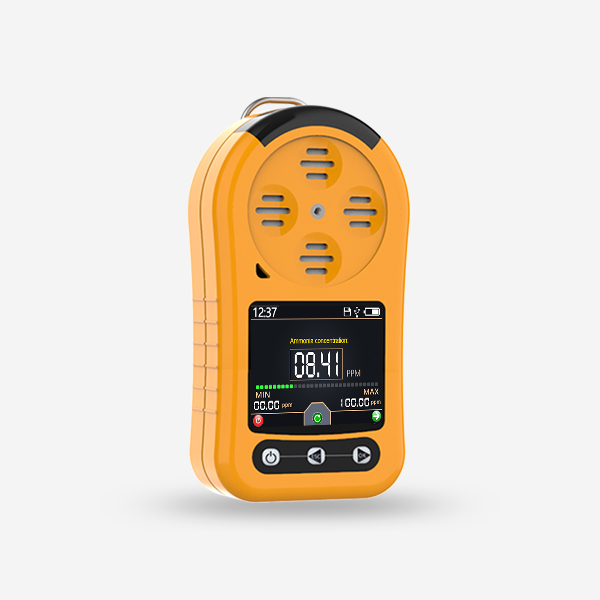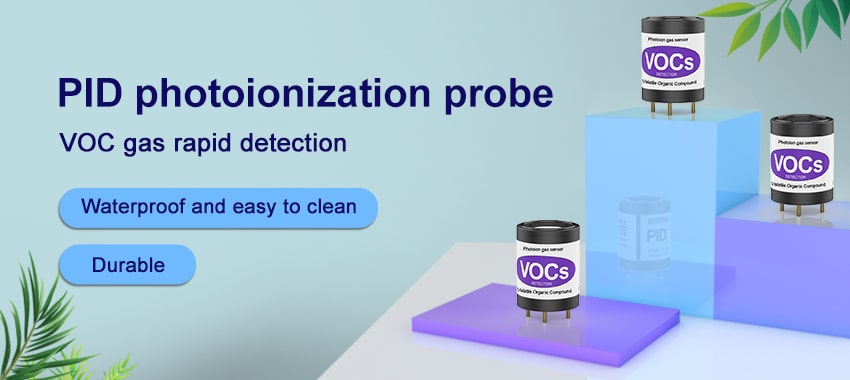VOC Sensors
VOC sensors are devices that measure the concentration of VOCs in the air and provide real-time data on indoor air quality. These sensors use different technologies to detect and quantify VOCs, including metal oxide semiconductor (MOS), photoionization detection (PID), and electrochemical sensors. Each technology has its strengths and limitations, and the choice of sensor depends on the specific application and requirements.

MOS sensors are commonly used for general-purpose indoor air quality monitoring, as they are low-cost, portable, and can detect a wide range of VOCs. MOS sensors work by oxidizing VOCs on the surface of a metal oxide film, which causes a change in the resistance of the film, proportional to the concentration of VOCs. MOS sensors are sensitive to temperature and humidity fluctuations, and their response time can be slow, but they are still widely used for screening purposes.
Portable TVOC gas detector – Handheld TVOC gas sensor

PID VOC sensors
PID VOC sensors are highly sensitive and selective for detecting low-level VOCs and have a rapid response time. PID VOC sensors work by ionizing VOCs when exposed to ultraviolet radiation, creating a measurable current that is proportional to the concentration of VOCs. PID sensors are more expensive than MOS sensors and require frequent calibration, but they are ideal for industrial applications or where high accuracy is needed.

Electrochemical VOC sensors
Electrochemical VOC sensors are based on the principle of electrochemical gas sensors and can detect a range of gases, including VOCs. Electrochemical sensors work by having a specific chemical reaction between the target gas and an electrode, which generates an electrical current proportional to the concentration of the gas. The sensors are more accurate and stable than MOS sensors but can be affected by environmental factors such as humidity and temperature.
The data collected from the VOC sensors can be analyzed and interpreted using different methods, including data visualization, pattern recognition, and machine learning algorithms. By analyzing VOC data, it is possible to identify sources of indoor air pollution, track changes over time, and make informed decisions about mitigation strategies. For example, if a VOC sensor detects high levels of formaldehyde in a room, it may indicate that there is formaldehyde off-gassing from the furniture or carpet, and action can be taken to remove or replace the source.
VOC sensor can also be integrated with other smart home devices, such as thermostats, ventilation systems, or air purifiers, to control indoor air quality automatically. For instance, if a VOC sensor detects high levels of VOCs, it can trigger the ventilation system or air purifier to start working and restore the air quality to a safe level.
In conclusion, VOC sensor play a crucial role in improving indoor air quality and protecting our health and well-being. By providing real-time data on VOC concentrations, these sensors enable us to monitor and control indoor air pollution effectively. As the smart home trend continues to grow, we expect to see more innovative ways of using VOC sensor to enhance indoor air quality and create healthier living environments for all.Ask me anything…(Shift + Enter = line break)